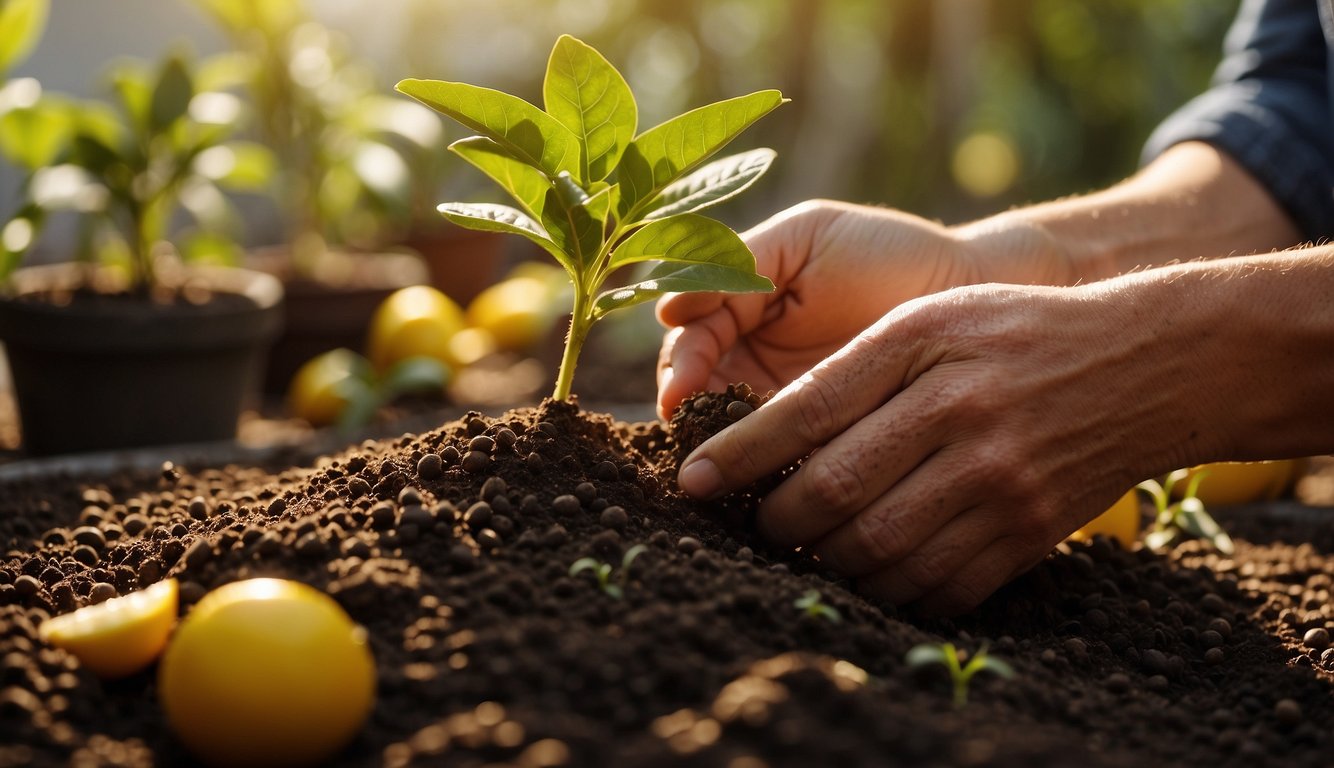TheHerbProf.com is a treasure trove of knowledge for those interested in natural healing and herbal remedies. The website is run by Paul Johnston MD. A naturopathic who has not only received extensive education in the field but also has personal experience in self-healing.
Planting Meyer Lemon seeds is a great way to grow your own Meyer Lemon tree from scratch. While it may take several years for the tree to mature and produce fruit, the process is relatively simple and can be done by anyone, regardless of their gardening experience.
In this article, I will provide you with a step-by-step guide on how to plant Meyer Lemon seeds and care for your tree as it grows.
Meyer Lemons are a popular citrus fruit known for their sweet and tangy flavor. They are often used in cooking and baking, and their juice is a common ingredient in cocktails.
While you can purchase Meyer Lemons at most grocery stores, growing your own tree from seed is a fun and rewarding experience. Not only will you have a steady supply of fresh lemons, but you will also have a beautiful and fragrant tree to admire in your yard or home.
So, let’s get started with planting your Meyer Lemon seeds and growing your own tree!
Understanding Meyer Lemon Trees – Planting Meyer Lemon Seeds
Botanical Profile
As an avid gardener, I have grown a variety of citrus trees in my backyard, including the Meyer Lemon tree.
The Meyer Lemon tree is a hybrid citrus tree, believed to be a cross between a lemon tree and a mandarin orange tree. It is a small evergreen tree that can grow up to 10 feet tall, and it produces fragrant white blossoms that are purple at the base. The tree has glossy, dark green leaves that are oval-shaped and slightly pointed at the tip.
Meyer Lemon trees are popular among gardeners and homeowners because they produce juicy, sweet, and less acidic lemons compared to other lemon varieties. The fruit is rounder and smaller than other lemons and has a thin, smooth, and bright yellow-orange skin. The flesh is juicy, tender, and seedless, making it perfect for cooking, baking, and making lemonade.
Meyer Lemon vs. Other Citrus Varieties
Meyer Lemon trees are different from other citrus trees in terms of their growth habits, fruit size, and taste.
Compared to other lemon trees, Meyer Lemon trees are more cold-tolerant and can grow in a wider range of climates. They also have a longer fruiting season, producing fruit throughout the year instead of just in the summer.
Meyer Lemons are also different from other citrus fruits in taste. They have a sweeter and less acidic taste compared to other lemon varieties, making them a popular choice for cooking and baking. They also have a distinct floral aroma that sets them apart from other citrus fruits.
Preparing for Planting Meyer Lemon Seeds
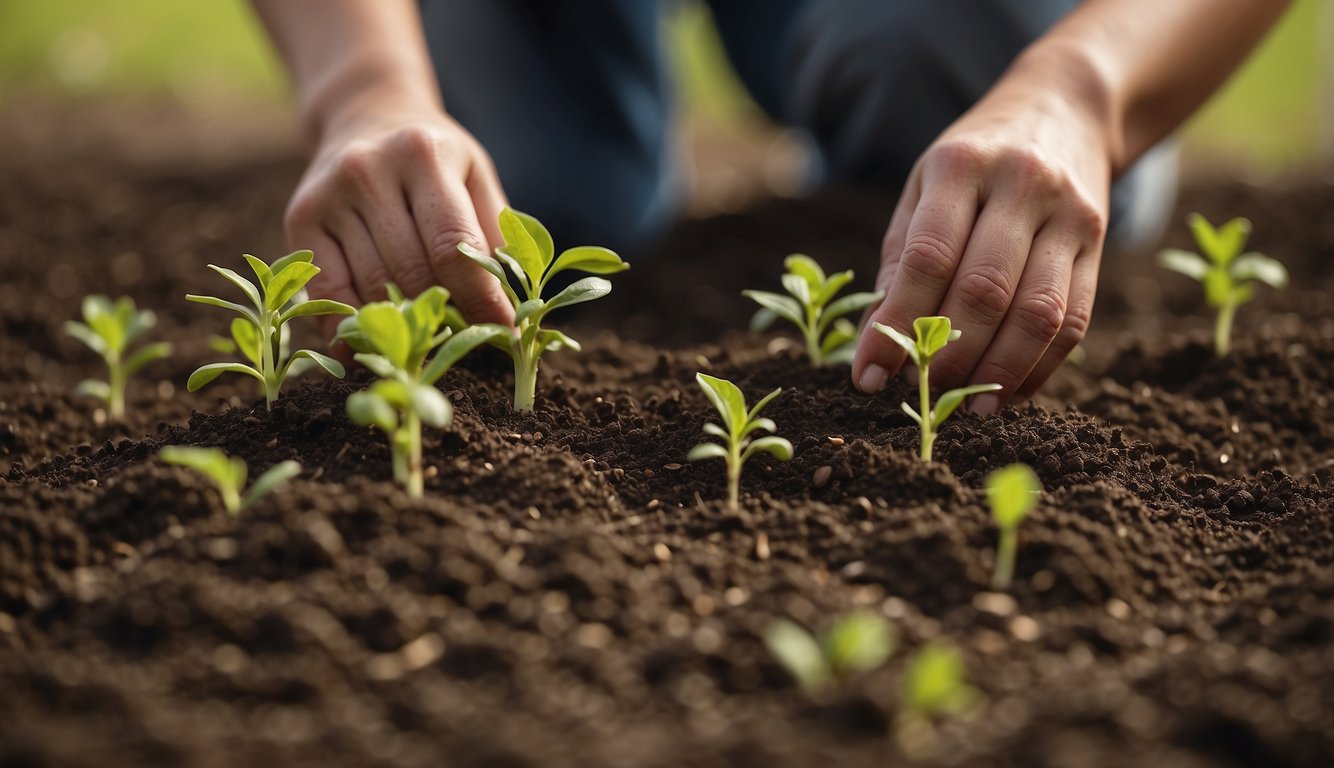
When it comes to planting Meyer lemon seeds, it’s important to properly prepare beforehand. Here are some important steps to take before planting your seeds.
Selecting Quality Seeds
First and foremost, it’s important to select quality Meyer lemon seeds.
Look for seeds that are plump, firm, and have a fresh appearance. Avoid seeds that are shriveled or discolored, as they may not be viable for planting.
Choosing the Right Soil
Choosing the right soil is crucial for the success of your Meyer lemon seeds.
Look for a high-quality potting soil that is well-draining and has a pH between 5.5 and 6.5. You can also mix in some perlite or sand to improve drainage and aeration.
Optimal Containers for Planting
When it comes to containers for planting Meyer lemon seeds, there are a few things to keep in mind.
First, make sure the container has drainage holes to prevent water from pooling and causing root rot. Second, choose a pot that is large enough to accommodate the seedling as it grows. Finally, consider using a biodegradable pot that can be planted directly in the ground once the seedling is established.
Planting Process – Planting Meyer Lemon Seeds
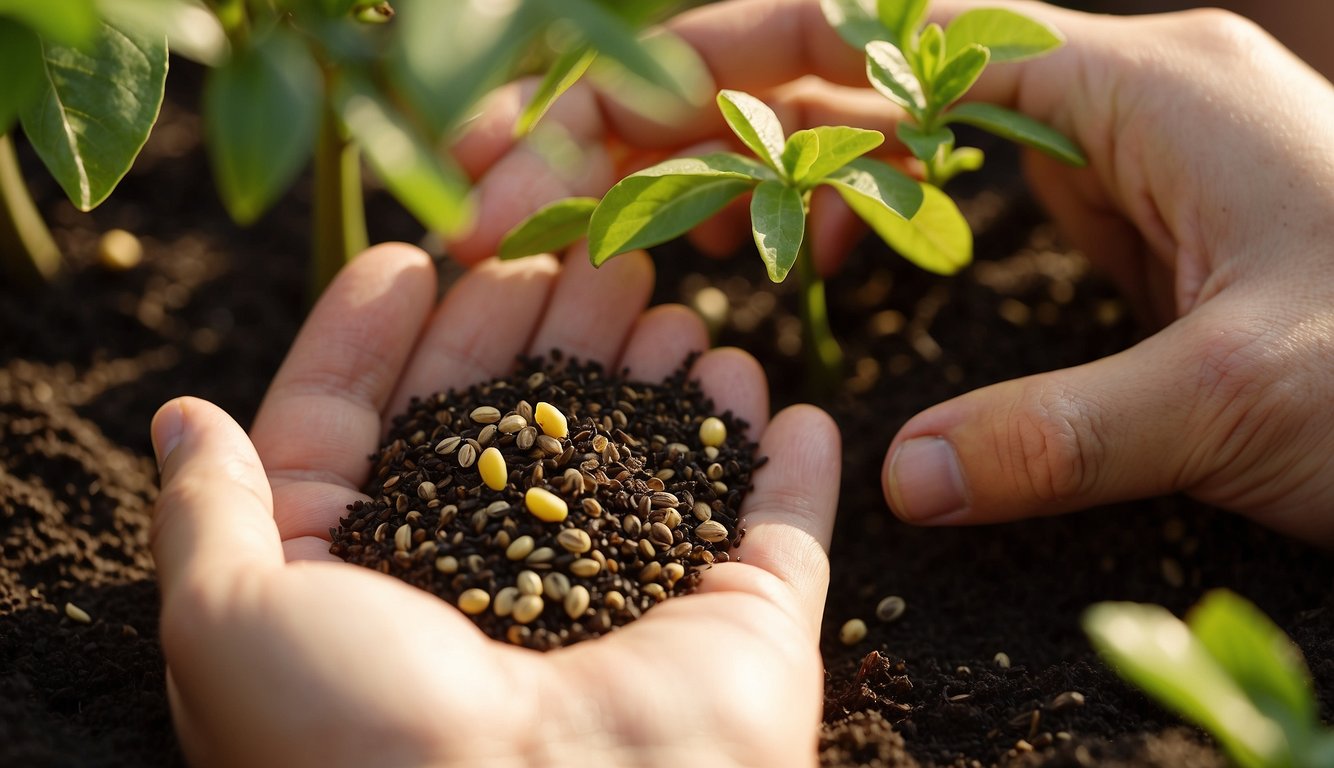
Planting Meyer lemon seeds is an easy and rewarding process that can yield delicious fruits in a few years. Here are the steps to follow:
Sowing Seeds Step-by-Step
- Collect seeds from a ripe, organic Meyer lemon. Clean them and let them dry for a day or two.
- Prepare a small container with a well-draining potting mix. A mix of peat moss, vermiculite, and perlite works well.
- Plant the seeds about half an inch deep in the soil. Water the soil thoroughly but avoid making it soggy. Cover the container with plastic wrap to maintain humidity.
- Place the container in a warm, sunny spot. The ideal temperature for germination is between 70°F and 80°F. A heating mat can help maintain the temperature if needed.
- Check the soil moisture level regularly and water as needed to keep it moist but not waterlogged.
- After about two weeks, the seeds should start to germinate. Remove the plastic wrap and move the container to a spot with bright but indirect light.
Germination Conditions
To ensure successful germination, it’s important to provide the right conditions for the seeds. Here are some tips to follow:
- Temperature: Meyer lemon seeds need a warm environment to germinate. The ideal temperature range is between 70°F and 80°F. If your home is cooler than that, consider using a heating mat to keep the soil warm.
- Humidity: Covering the container with plastic wrap helps maintain humidity levels and prevent the soil from drying out too quickly. Once the seeds have germinated, remove the plastic wrap to prevent mold growth.
- Soil Moisture: Meyer lemon seeds need consistently moist soil to germinate. Water the soil regularly to keep it moist but not waterlogged. Avoid letting the soil dry out completely or the seeds may die.
- Germination Time: Meyer lemon seeds can take anywhere from 1 to 4 weeks to germinate. Be patient and keep the soil moist and warm until the seeds sprout.
Caring for Young Meyer Lemon Plants – Planting Meyer Lemon Seeds
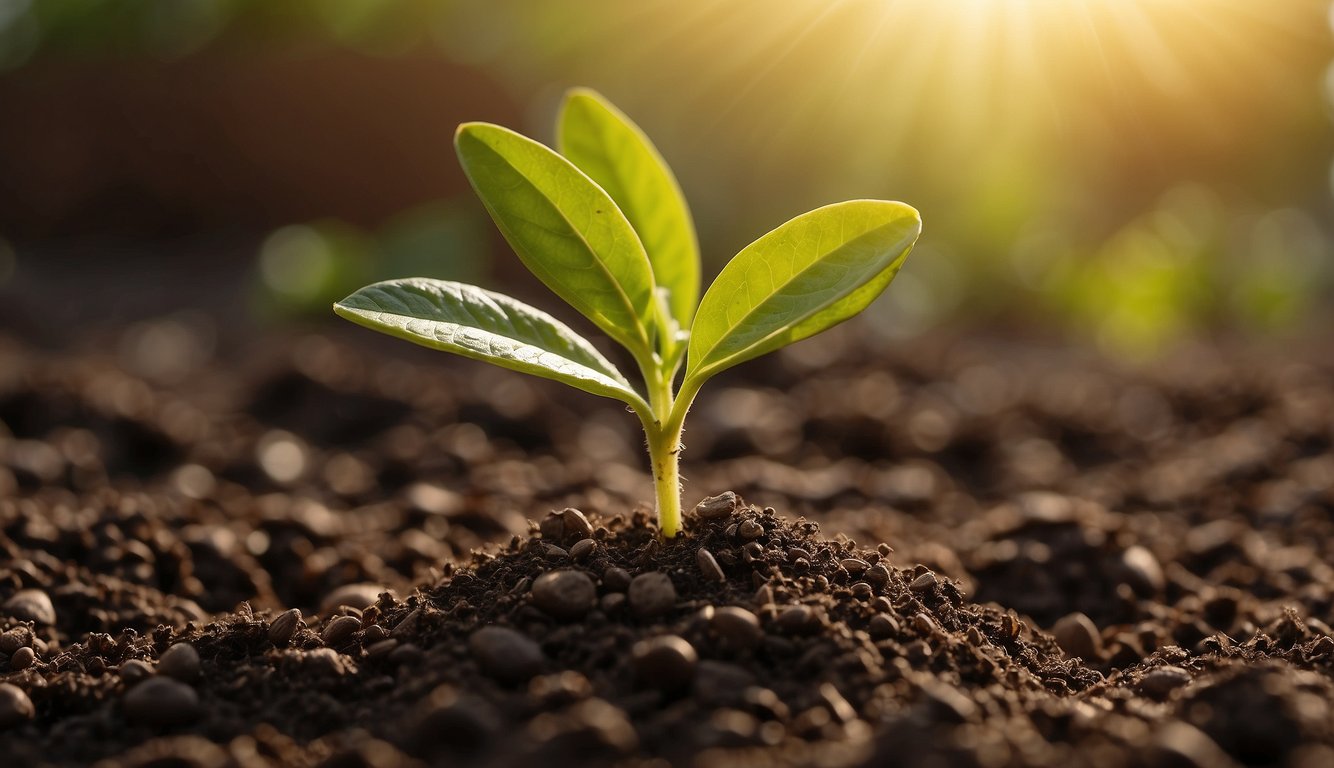
Growing Meyer lemon plants from seeds can be a rewarding experience. Once your seeds have germinated, it is crucial to take care of the young plants properly. In this section, I will discuss the essential aspects of caring for young Meyer lemon plants.
Watering and Feeding
Meyer lemon plants require regular watering to thrive. However, overwatering can lead to root rot, which can be fatal to the plant.
It is best to water the plant when the top inch of soil is dry to the touch. You can check the soil moisture level by sticking your finger into the soil. If the soil feels dry, it is time to water the plant.
Meyer lemon plants also need proper nutrition to grow healthy and strong. You can feed the young plants with a balanced fertilizer every four to six weeks during the growing season. Make sure to follow the manufacturer’s instructions for the proper application rate.
Sunlight and Temperature Requirements
Meyer lemon plants need plenty of sunlight to grow and produce fruit. They require at least six hours of direct sunlight every day.
If you are growing the plant indoors, place it near a south-facing window that gets plenty of sunlight.
Meyer lemon plants also have specific temperature requirements. They prefer temperatures between 55°F and 70°F. Avoid exposing the plant to extreme heat or cold as it can damage the plant.
Repotting and Pruning
As the Meyer lemon plant grows, it may outgrow its container. When this happens, it is time to repot the plant into a larger container.
Choose a pot that is one size larger than the current one and use a well-draining potting mix.
Pruning is also an essential aspect of caring for Meyer lemon plants. It helps to keep the plant healthy and encourages fruit production.
You can prune the plant in the early spring by removing any dead or damaged branches. You can also prune the plant to control its size and shape.
Pest and Disease Management – Planting Meyer Lemon Seeds
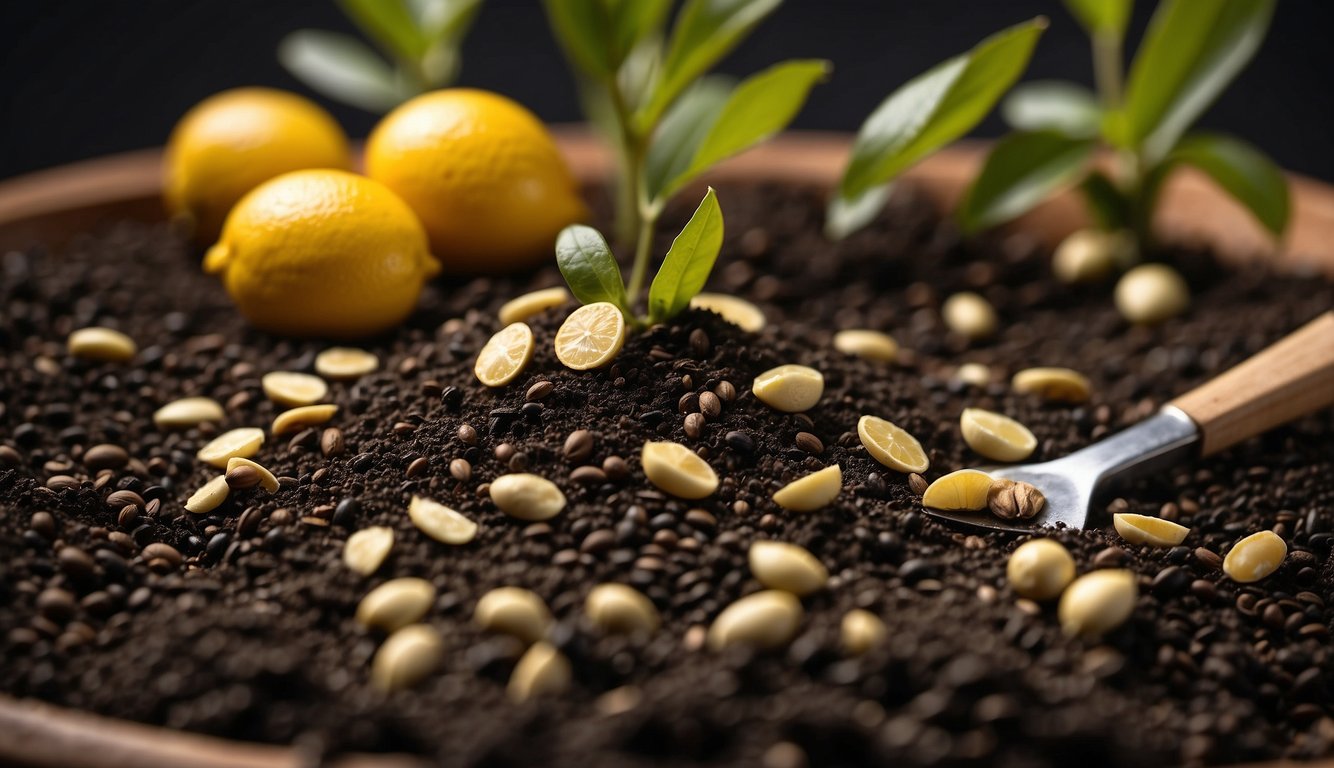
As with any plant, Meyer lemon trees are susceptible to pests and diseases that can hinder their growth and fruit production. Here are some common pests and disease prevention and treatment methods to keep your Meyer lemon tree healthy and thriving.
Common Pests
Some common pests that can affect Meyer lemon trees include aphids, spider mites, and scale insects.
Aphids are small, soft-bodied insects that suck the sap from the leaves and stems of the tree. Meanwhile, spider mites are tiny arachnids that feed on the leaves, causing yellowing and browning. Lastly, scale insects are small, oval-shaped insects that attach themselves to the leaves and stems, sucking the sap and causing yellowing and leaf drop.
To prevent and treat these pests, try using insecticidal soap or neem oil.
Insecticidal soap is a natural, non-toxic way to control pests, while neem oil is a natural insecticide that can be used to kill a variety of pests, including aphids, spider mites, and scale insects.
Disease Prevention and Treatment
Meyer lemon trees can also be susceptible to various diseases, including citrus black spot and citrus canker.
Citrus black spot is a fungal disease that affects the fruit of citrus trees, causing dark, sunken lesions on the fruit’s skin. To control citrus black spot, it is essential to remove any infected fruit and leaves and to keep the tree’s canopy open to promote air circulation.
Citrus canker is a bacterial disease that causes yellowing and spotting on the leaves, stems, and fruit of citrus trees.
To prevent citrus canker, avoid planting citrus trees near other citrus trees, as the disease can easily spread from tree to tree. If your Meyer lemon tree does become infected with citrus canker, it is important to remove and destroy any infected plant material and to disinfect any tools used on the tree.
Growing Meyer Lemons Indoors – Planting Meyer Lemon Seeds
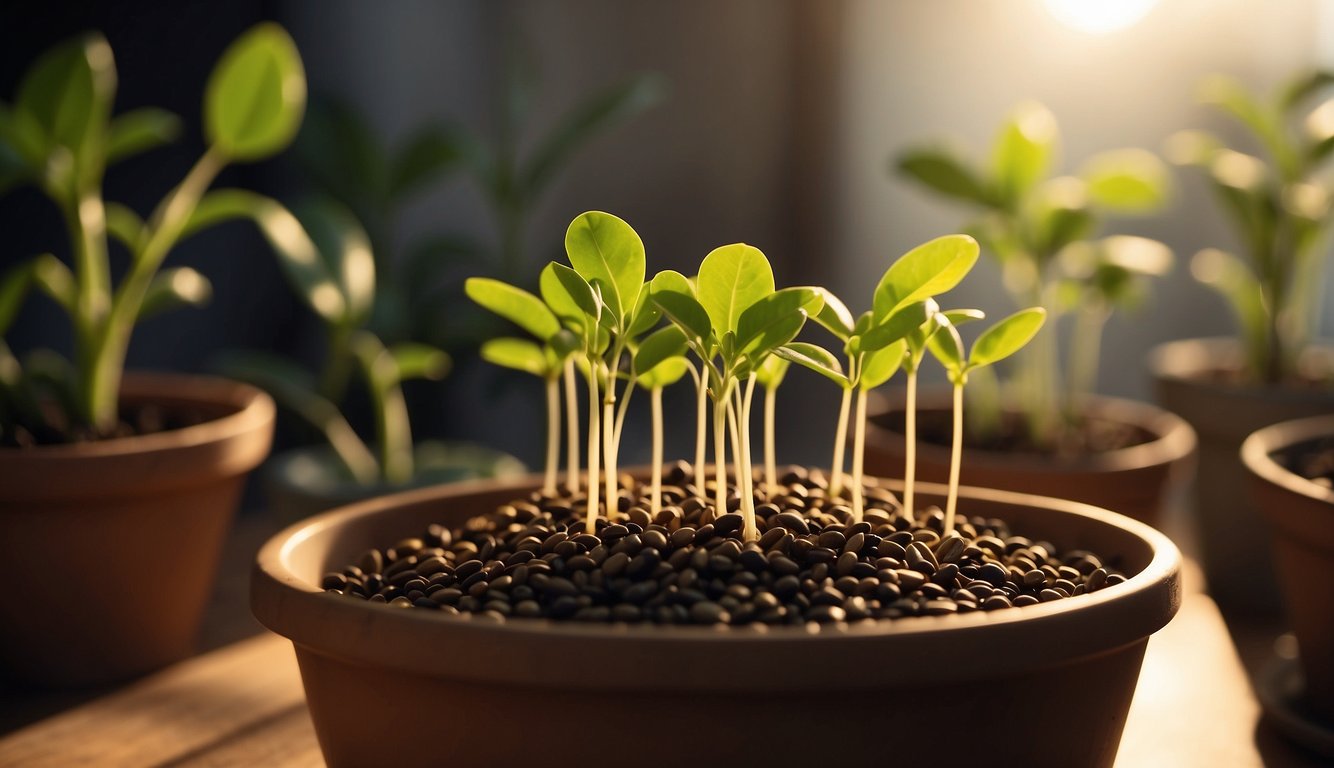
As an avid gardener, I enjoy growing plants indoors. One of my favorite indoor plants is the Meyer lemon tree. Not only is it a beautiful addition to any room, but it also produces delicious fruit. Here are some tips on how to successfully grow Meyer lemons indoors.
Indoor Cultivation Tips
When growing Meyer lemons indoors, it is important to choose the right container. A 5-gallon container is perfect for growing a single tree. Make sure the container has drainage holes to prevent water from accumulating at the bottom.
Additionally, it is important to use well-draining soil to prevent the roots from becoming waterlogged.
Meyer lemon trees thrive in a warm, humid environment. Keep the tree in a room with a temperature between 60 and 80 degrees Fahrenheit.
If the air in your home is dry, consider using a humidifier to increase the moisture levels in the room.
Using Grow Lights
Meyer lemon trees require a lot of light to grow and produce fruit. If you don’t have a room with a lot of natural light, consider using grow lights.
LED grow lights are a great option for indoor gardening. They are energy-efficient and emit the specific wavelengths of light that plants need to grow.
When using grow lights, it is important to keep them at the right distance from the tree. Place the lights 6 to 12 inches above the tree and adjust the height as needed.
Keep the lights on for 12 to 16 hours a day to ensure the tree gets enough light.
Harvesting and Usage – Planting Meyer Lemon Seeds
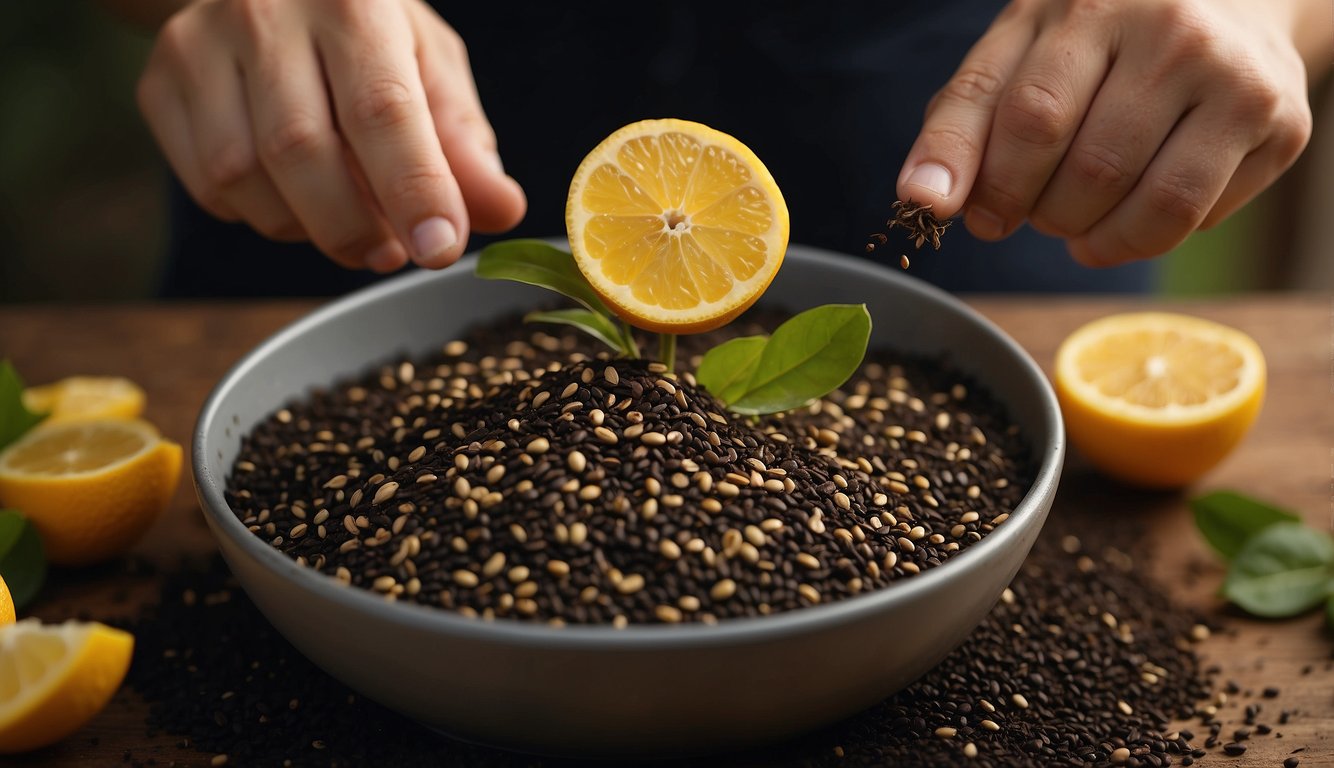
Identifying Ripe Meyer Lemons
When it comes to harvesting Meyer lemons, it’s important to wait until they are fully ripe. Ripe Meyer lemons are a deep yellow-orange color and have a slightly soft texture when gently squeezed.
Unlike other lemons, Meyer lemons have thin skin and are more delicate, so it’s important to handle them with care.
Harvest Techniques
To harvest Meyer lemons, I usually use a pair of scissors or clippers to snip the fruit from the tree.
It’s important to cut the stem just above the fruit to avoid damaging the tree. Once harvested, I recommend storing Meyer lemons in a cool, dry place for up to two weeks.
Culinary and Other Uses
Meyer lemons are a versatile fruit that can be used in a variety of culinary and non-culinary applications. They are perfect for making lemonade, desserts, and cocktails.
I love using Meyer lemons in baking, as they have a sweeter, less acidic flavor than other lemons. They also pair well with seafood and poultry dishes.
Cultural Significance – Planting Meyer Lemon Seeds
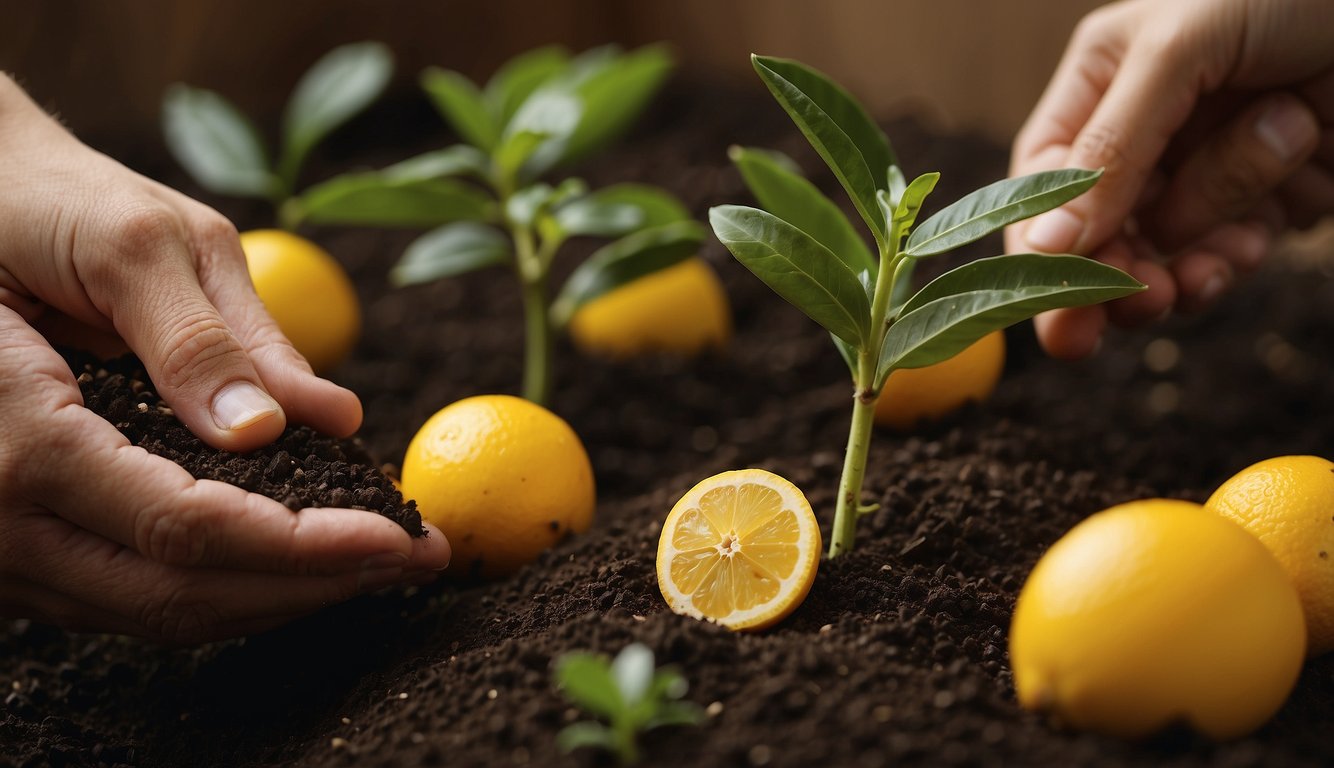
As a hybrid fruit, Meyer lemons have a unique cultural significance in the United States. In this section, I will explore the cultural uses and traditions surrounding Meyer lemons.
Meyer Lemons in the United States
Meyer lemons were first introduced to the United States in 1908 by Frank Nicholas Meyer. The fruit quickly gained popularity due to its unique flavor, which is sweeter than traditional lemons.
Today, Meyer lemons are widely cultivated in California and Florida, two states with a strong citrus fruit industry.
Meyer lemons have become a staple in American cuisine, used in everything from desserts to savory dishes. The fruit’s unique flavor and aroma make it a popular ingredient in cocktails and baked goods.
Cultural Uses and Traditions
Meyer lemons have also become associated with certain cultural uses and traditions. In Chinese culture, the fruit is considered a symbol of good luck and is often given as a gift during the Chinese New Year.
The fruit’s bright yellow color is said to represent gold, while its sour taste represents the bitter moments in life.
In addition, Meyer lemons are often used in aromatherapy and other wellness practices. The fruit’s bright, citrusy scent is said to be uplifting and energizing, making it a popular ingredient in essential oils and other natural remedies.
Sowing Planting Meyer Lemon Seeds with TheHerbProf
Let’s explore how our Planting Meyer Lemon Seeds guide and the herbal wisdom at theherbprof.com can work together.
Our Planting Meyer Lemon Seeds guide is your first step to a successful Meyer lemon harvest. But what about the rest of the journey? That’s where theherbprof.com comes in. It’s your herbal encyclopedia, including Meyer lemon care!
Picture this. You’ve followed our Planting Meyer Lemon Seeds guide and your Meyer lemon tree is thriving. But you’re unsure about pest control or when to water. No problem! Theherbprof.com has all the answers. It offers a wealth of information on how to care for your Meyer lemon tree.
And there’s more! Theherbprof.com also shares the health benefits of Meyer lemons. So, while you’re enjoying the fruits of your labor, you’re also learning about their nutritional value. You can check our homepage here.
So, let’s get growing with our Planting Meyer Lemon Seeds guide and let theherbprof.com guide us on this Meyer lemon-growing journey.
References – Planting Meyer Lemon Seeds
Little Herb Encyclopedia, by Jack Ritchason; N.D., Woodland Publishing Incorporated, 1995
The Ultimate Healing System, Course Manual, Copyright 1985, Don Lepore
Planetary Herbology, Michael Tierra, C.A., N.D., Lotus Press, 1988
Handbook of Medicinal Herbs, by James A. Duke, Pub. CRP Second Edition 2007
The Complete Medicinal Herbal, by Penelope Ody, Published by Dorling Kindersley
Check the Following Articles!
Insects on Pepper Plants: Identification and Control
How Long Does It Take to Grow Avocado?
Pests on Pepper Plants: The How-To Guide To Solve It!
Recipes for Ground Cherries: Sweet and Tangy Delights
Frequently Asked Questions – Planting Meyer Lemon Seeds
How can I successfully germinate Meyer lemon seeds?
To successfully germinate Meyer lemon seeds, first, remove the seeds from the fruit and clean them.
Next, soak the seeds in water for 24 hours. After that, plant the seeds in a well-draining potting mix about half an inch deep and water the soil thoroughly.
Cover the container with plastic wrap to maintain humidity and place it in a warm, sunny spot. Germination usually takes 2 to 4 weeks, but can sometimes take longer.
What are the best conditions for growing a Meyer lemon tree indoors from seed?
Meyer lemon trees need a lot of sunlight, so it is best to place them near a south-facing window or under grow lights.
The ideal temperature range for growing Meyer lemon trees is between 60 and 70°F (15.5 and 21°C). Additionally, Meyer lemon trees require well-draining soil and consistent watering.
How long does it typically take for a lemon tree to bear fruit when grown from seed?
It can take up to 3-5 years for a Meyer lemon tree grown from seed to bear fruit. However, the time it takes for a tree to bear fruit can vary depending on factors such as growing conditions and the age of the tree.
Are there any special techniques for planting lemon seeds from store-bought lemons?
When planting lemon seeds from store-bought lemons, it is important to select seeds from a ripe lemon.
After removing the seeds, clean them and soak them in water for 24 hours. Plant the seeds in a well-draining potting mix and follow the same steps as planting seeds from a Meyer lemon.
Is it necessary to soak lemon seeds before planting, and if so, for how long?
Soaking lemon seeds before planting can help to soften the outer layer of the seed and make it easier for the seed to germinate.
Soak the seeds for 24 hours in water before planting.
What is the ideal time of year to plant lemon seeds in a temperate climate?
The ideal time to plant lemon seeds in a temperate climate is in the spring when the weather starts to warm up. This will give the seeds the best chance to germinate and grow into healthy trees.
